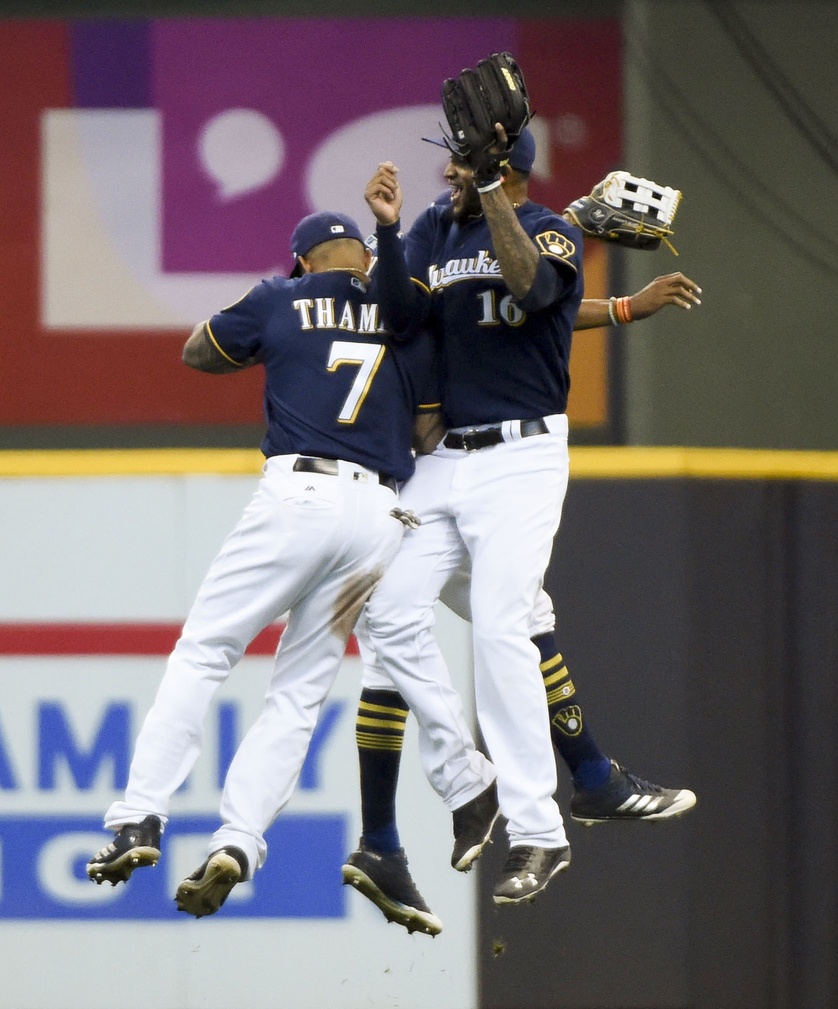The opening month of the 2017 season did not go as planned for young Brewers outfielder Domingo Santana. After seeing his name near the top of average exit velocity leaderboards for the 2016 season, it seemed safe to assume the 24-year-old was due for a breakout.
That has not been the case.
Santana has come out of the gate hitting .213 along with a paltry .312 OBP. Those numbers don’t merit the amount of playing time he is receiving with his below average defense in right-field.
It’d be easy for Craig Counsell and his coaching staff to banish Santana to the bench, or even Class-AAA, based on his output so far. The Brewers know better.
Despite Santana’s weak output for the month of April in what was supposed to be his breakout season, he has immensely improved his approach at the plate.
Santana has kept his walk rate up over 11 percent. He is walking at a slightly higher rate, 11.8 percent, than PECOTA called for, 11.4 percent. A full season at his current pace would place him among the top 25 for the league. A player with the ability to walk at Santana’s rate should be playing every day, unless the strikeout rate is out of control.
That was the case in 2016: Santana struck out 32.6 percent of the time last year, an unsustainable number as an everyday big leaguer unless your name is Chris Davis. However, Santana’s strikeout rate has fallen to 25.8 percent in 2017. While still a high number, striking out a quarter of the time compared to a third of the time makes all the difference for a young power hitter. His swinging strike rate has fallen from over 30 percent to just over 27 percent. Overall, Santana is swinging at a slightly higher rate and he is seeing fewer pitches in the zone.
Although Santana is striking out less, he is swinging at a ton of balls. He’s had a five percentage point increase in swings at pitches outside the zone. This likely has much to do with his .231 BABIP.
An argument could be made that he is better off swinging and missing on those pitches outside the zone, striking out more and hitting the ball harder when he does hit it into play. There’s no way to figure out why Santana has decided to be more aggressive outside the zone, but if he can somehow get his free-swinging ways back around his career level and maintain the same contact rate he displayed in the month of April, he will likely strikeout even less and start making harder contact again.
There is cause for concern in regards to Santana’s exit velocity so far in 2017. His average exit velocity is below league average at 86.51 MPH. This huge dip in exit velocity, from 94 MPH in 2016, also likely due to his swings outside the zone.
Santana is also putting the ball in the air more often than in the past. A player of Santana’s strength needs to get the ball up and out of the park. His average launch angle has went from 9.1 degrees to 12.4 degrees. In the long run, this will result in more home runs and extra bases for the right-fielder. His average height on balls in play has increased by over six feet. This type of batted ball profile is exactly what Santana should be looking to replicate.
Although Domingo Santana has been disappointing so far, it’s easy to see the basis of an improved and solid hitter. If he can get his free-swinging ways under control and continue making consistent contact, on top of his elite walk rate, the former top prospect will live up to Brewers fans hopes and dreams. This will only happen as long as he is allowed patience.
